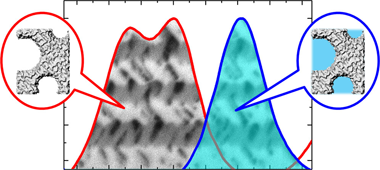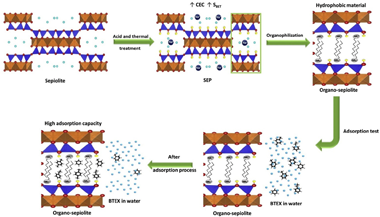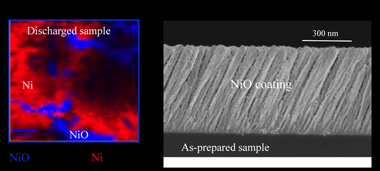Scientific Papers in SCI
2021
2021
Reactividad de Sólidos
Enhancing the electrical conductivity of in-situ reduced graphene oxide-zirconia composites through the control of the processing routine
Lopez-Pernia, C; Morales-Rodriguez, A; Gallardo-Lopez, A; Poyato, RCeramics International, 47 (2021) 9382-9391
Show abstract ▽
Graphene oxide (GO) was mixed with 3 mol% yttria tetragonal zirconia polycrystal (3YTZP) using two powder processing routines: a colloidal method in an aqueous solution and a combination of ultrasonication with highenergy planetary ball milling in wet conditions. Highly densified 3YTZP composites with reduced GO (rGO) were consolidated by Spark Plasma Sintering. The in-situ reduction of GO was successfully achieved during the high temperature sintering process and a detailed study of the restoration of the graphene structure in the sintered composites has been made by Raman spectroscopy. Although no differences between the composites prepared by the two processing methods were found in the distribution of the rGO throughout the 3YTZP matrix for high rGO contents (i.e. the composites with 5 and 10 vol% rGO), a better distribution of the graphene phase was found in the composites with 1 and 2.5 vol% rGO prepared by planetary ball milling. This result, together with a better reduction of the GO in these composites, led to the obtaining of rGO/3YTZP composites with a better behavior in terms of electrical conductivity: an electrical percolation threshold below 2.5 vol% rGO and a high electrical conductivity value (-610 S/m for 10 vol% rGO).
April, 2021 | DOI: 10.1016/j.ceramint.2020.12.069
Nanotecnología en Superficies y Plasma
Form Birefringence in Resonant Transducers for the Selective Monitoring of VOCs under Ambient Conditions
Oliva-Ramirez, Manuel; Lopez-Santos, Carmen; Berthon, Hermine; Goven, Mathilde; Portoles, Jose; Gil-Rostra, Jorge; Gonzalez-Elipe, Agustin R.; Yubero, FranciscoACS Applied Materials & Interfaces, 13 (2021) 19148-19158
Show abstract ▽

In this work, we have developed a new kind of nanocolumnar birefringent Bragg microcavity (BBM) that, tailored by oblique angle deposition, behaves as a selective transducer of volatile organic compounds (VOCs). Unlike the atomic lattice origin of birefringence in anisotropic single crystals, in the BBM, it stems from an anisotropic self-organization at the nanoscale of the voids and structural elements of the layers. The optical adsorption isotherms recorded upon exposure of these nanostructured systems to water vapor and VOCs have revealed a rich yet unexplored phenomenology linked to their optical activity that provides both capacity for vapor identification and partial pressure determination. This photonic response has been reproduced with a theoretical model accounting for the evolution of the form birefringence of the individual layers upon vapor condensation in nanopores and internanocolumnar voids. BBMs that repel water vapor but are accessible to VOCs have been also developed through grafting of their internal surfaces with perfluorooctyltriethoxysilane molecules. These nanostructured photonic systems are proposed for the development of transducers that, operating under environmental conditions, may respond specifically to VOCs without any influence by the degree of humidity of the medium.
April, 2021 | DOI: 10.1021/acsami.1c02499
Materiales de Diseño para la Energía y Medioambiente
Organophilization of acid and thermal treated sepiolite for its application in BTEX adsorption from aqueous solutions
Varela, CF; Pazos, MC; Alba, MDJournal of Water Process Engineering, 40 (2021) 101949
Show abstract ▽

Acid and thermal treated sepiolite was organophilized by cationic exchange with several alkylammonium cations (octylammonium, hexadecylammonium, tetradecyltrimethylammonium, and hexadecyltrimethylammonium). The adsorption capacity of BTEX from aqueous solutions was evaluated through the adsorption isotherms performed in batch. The results were analysed using three isotherm models: Freundlich, Langmuir and Dubinin-Radushkevich (D-R model). The behaviour of adsorption isotherm suggested the multilayer coverage on a heterogeneous surface, which is according to the Freundlich isotherm model. The thermodynamic analyse using the D-R model show that physical mechanisms govern the process. The maximum adsorption capacity of BTEX on the obtained materials was in the range values of 81.19 mg g(-1) - 1448.42 mg g(-)(1), which are higher than those reported up to now. The organo-sepiolite materials exhibit a high potential in the adsorption of BTEX compounds from aqueous solutions.
April, 2021 | DOI: 10.1016/j.jwpe.2021.101949
Nanotecnología en Superficies y Plasma
Rietveld Refinement, mu-Raman, X-ray Photoelectron, and Mossbauer Studies of Metal Oxide-Nanoparticles Growth on Multiwall Carbon Nanotubes and Graphene Oxide
Ramos-Guivar, JA; Gonzalez-Gonzalez, JC; Litterst, FJ; Passamani, ECCrystal Growth & Design, 21 (2021) 2128-2141
Show abstract ▽
Applying a modified coprecipitation method, maghemite and anatase nanoparticles embedded in graphene oxide and multiwall carbon nanotube frameworks were prepared, and a detailed structural characterization is presented. Transmission electron images have revealed that the multiwall carbon nanotubes and graphene oxide act as substrates to reduce the nanoparticle agglomeration with narrow sizes of ca. 9-20 nm, in agreement with the results of the Rietveld refinement, which have also indicated their crystallite apparent size and shapes using the spherical harmonics approach. In structural studies of maghemite nanoparticles by Raman spectroscopy, it was found that the effect of optical density and laser power intensity plays a significant role. When no optical filter was located between the powder sample and the laser source, a transformation from the gamma-Fe2O3 to the alpha-Fe2O3 phase was observed, as demonstrated by the disappearance of the characteristic broad Raman peak (A(1g)) of the gamma-Fe2O3 phase when increasing the laser power. X-ray photoelectron spectroscopy has also brought insights into the functionalization mechanism, suggesting that the one-pot reduction of the graphene oxide is favored by the alkaline gamma-Fe2O3 nanoparticle growth. The temperature dependence of the Fe-57 Mossbauer spectra has indicated that the effective anisotropy constant of Fe oxide-based nanoparticles is similar to that of bulk maghemite, and magnetic relaxation of Fe3+ spins depends on particle sizes.
April, 2021 | DOI: 10.1021/acs.cgd.0c01551
Nanotecnología en Superficies y Plasma
New Insights on the Conversion Reaction Mechanism in Metal Oxide Electrodes for Sodium-Ion Batteries
Mosa, J; Garcia-Garcia, FJ; Gonzalez-Elipe, AR; Aparicio, MNanomaterials, 11 (2021) 966
Show abstract ▽

Due to the abundance and low cost of exchanged metal, sodium-ion batteries have attracted increasing research attention for the massive energy storage associated with renewable energy sources. Nickel oxide (NiO) thin films have been prepared by magnetron sputtering (MS) deposition under an oblique angle configuration (OAD) and used as electrodes for Na-ion batteries. A systematic chemical, structural and electrochemical analysis of this electrode has been carried out. The electrochemical characterization by galvanostatic charge-discharge cycling and cyclic voltammetry has revealed a certain loss of performance after the initial cycling of the battery. The conversion reaction of NiO with sodium ions during the discharge process to generate sodium oxide and Ni metal has been confirmed by X-ray photoelectron spectra (XPS) and micro-Raman analysis. Likewise, it has been determined that the charging process is not totally reversible, causing a reduction in battery capacity.
April, 2021 | DOI: 10.3390/nano11040966
- ‹ previous
- 81 of 411
- next ›














